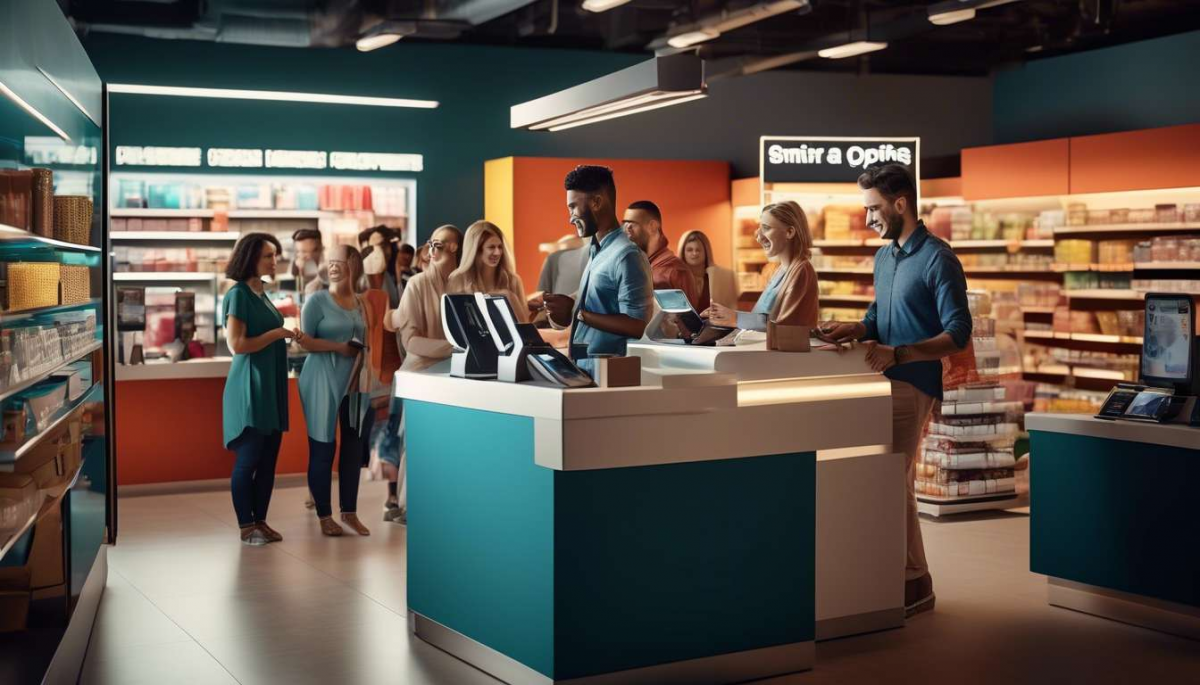
In today’s highly competitive retail environment, enhancing the customer’s shopping experience has become a crucial aspect of business strategy. This article delves into various methods and approaches that can be employed to improve customer satisfaction and drive additional sales.
By focusing on elements such as:
- Personalized Service
- Streamlined Checkout Processes
- Innovative Use of Technology
retailers can create a more engaging and efficient shopping experience.
Additionally, the integration of data analytics allows for a better understanding of consumer behavior, enabling:
- Tailored marketing efforts
- Product recommendations
The significance of creating an immersive and seamless shopping journey cannot be overstated, as it directly influences customer loyalty and brand reputation.
This article will explore proven strategies and case studies that highlight how businesses can leverage these tactics to achieve:
- Greater customer satisfaction
- Improved sales performance
Ultimately, these efforts lead to sustainable growth in the ever-evolving retail landscape.
For more insights and expert advice on enhancing your retail strategy, visit shopedia.com.
Personalized Customer Interactions
Retailers can enhance the shopping experience by utilizing data analytics to create personalized customer interactions. This approach enables businesses to tailor offerings to individual preferences, fostering a sense of belonging among consumers.
Through the analysis of purchasing behavior and customer data, retailers can deliver targeted recommendations and promotions, which not only meet customer needs but also optimize engagement strategies. Personalization, when executed effectively, increases customer loyalty and satisfaction, as shoppers feel understood and valued.
Moreover, optimization of marketing efforts through data-driven insights allows retailers to streamline operations and allocate resources more efficiently. This targeted approach results in a more convenient shopping experience, reducing the time and effort customers spend searching for desired products. By anticipating customer needs, retailers can provide a seamless journey that encourages repeat visits and positive word-of-mouth.
The integration of advanced analytics tools in retail environments facilitates deeper customer understanding, ultimately leading to enhanced service levels and a stronger connection between the brand and its clientele.
Seamless Checkout Experiences
Streamlining the checkout process is crucial for enhancing customer satisfaction and reducing cart abandonment rates. Achieving a seamless checkout experience requires a focus on personalization, optimization, and convenience.
Personalization involves tailoring the checkout process to individual customer preferences, making the experience feel unique and welcoming.
Optimization ensures the checkout process is efficient by:
- Minimizing the steps required to complete a purchase.
- Addressing potential barriers that may cause frustration.
This efficiency not only reduces the time spent at checkout but also enhances the overall perception of the shopping experience.
Convenience is paramount in the checkout process, as it directly impacts customer retention and loyalty. To enhance convenience, businesses should:
- Offer multiple payment options, such as digital wallets and one-click purchasing, to cater to diverse customer needs.
- Ensure mobile-friendly checkout processes, as a significant portion of online shopping occurs on mobile devices.
By prioritizing a seamless checkout experience, businesses can significantly improve customer engagement and drive additional sales.

Leveraging Data for Sales Optimization
Utilizing robust data analytics enables businesses to identify sales trends and customer behaviors, thereby refining strategies to boost revenue.
By analyzing these data sets, companies gain insights that allow for the personalization of marketing efforts, ensuring that customers receive relevant and timely product recommendations. This tailored approach not only enhances the shopping experience but also fosters a sense of belonging among customers, as they perceive the business to understand and cater to their individual needs.
Optimization of sales strategies through data-driven decisions results in more efficient operations and improved customer satisfaction.
Data analytics can identify:
- Peak purchasing times
- Preferred shopping channels
- Trending products
These insights support the development of more strategic inventory management and marketing initiatives. Furthermore, this optimization contributes to the convenience of the shopping experience, reducing wait times and ensuring product availability.
By leveraging data effectively, businesses can create a seamless and personalized shopping journey, ultimately driving additional sales and cultivating long-term customer loyalty.